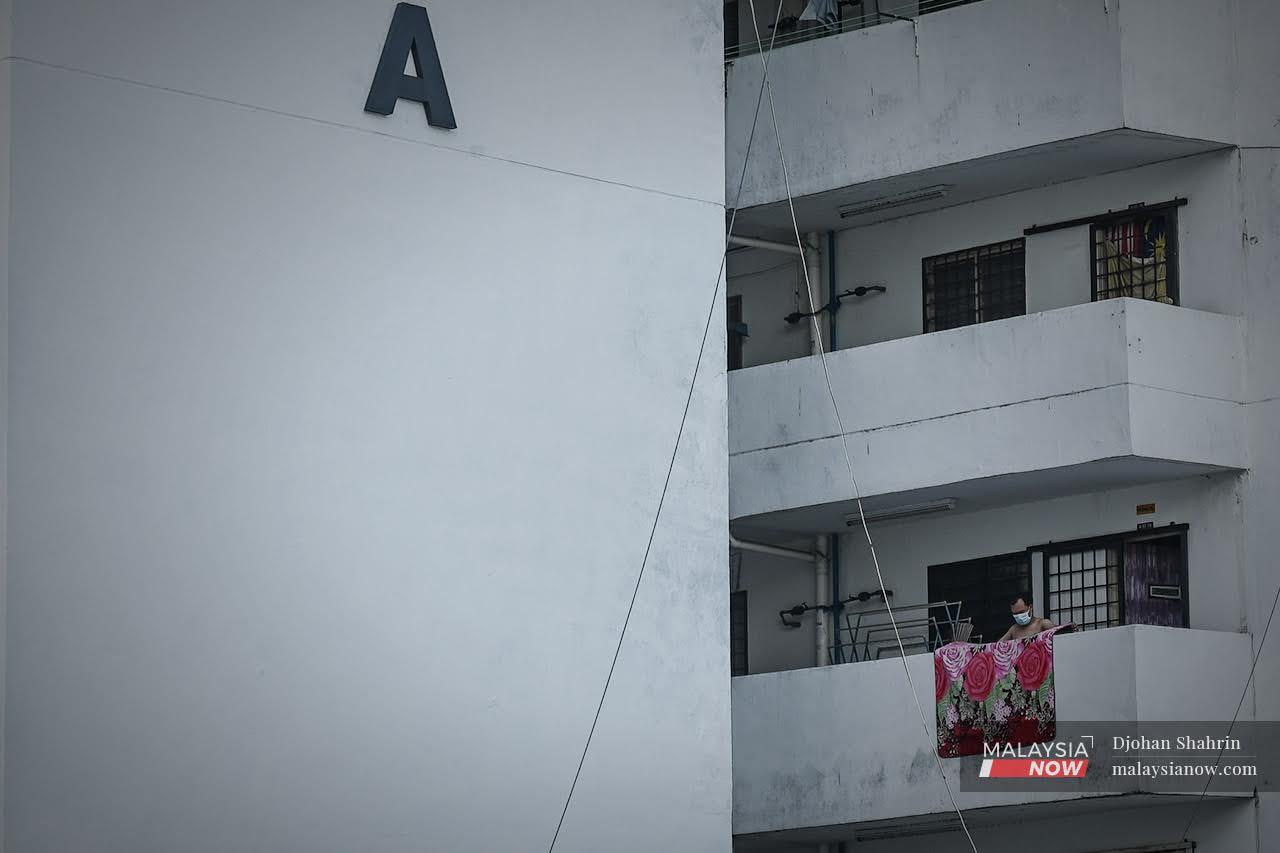‘Lepak’, the great escape from the confines of low-cost housing units
Lacking the space for themselves at home, children take what they can get elsewhere instead.
Fifteen-year-old Haris lives with his family in an apartment unit at a low-cost housing flat in Kuala Lumpur.
Unlike many others in his situation, he is fortunate enough to have his own room. But the walls of this small space are lined with cupboards containing household items such as pots and pans, and every available surface area is piled high with his father’s collection of used car accessories.
For Haris and his family, this is just one of the realities of life in a People’s Housing Project (PPR) flat where money is tight and space is a premium.
But the years of living in the cramped unit have set in Haris a strong desire for freedom and open areas.
At night, he and his friends ride their bicycles to Dataran Merdeka in the heart of the capital city where they spend hours loafing about in the open air.
For just a few hours, they forget the narrow space and crowded rooms that characterise their lives back home.
A 2019 study by the UK’s University College London found that the majority of children spend their time at home, with roughly a third of this time spent in their rooms.
The study also found that children who live in low-cost housing are more prone to developing mental health problems than those in more affordable areas.
Common symptoms include anxiety, depression and a lack of emotional control.
It also highlighted the strong link between home environments and the behaviour and emotions of children.
In Malaysia, stories of children like Haris are a norm. The majority of those from low-income households lived jammed together in small rooms while their parents struggle each day to put food on the table and keep the roofs over their heads.
Space is a luxury and privacy a distant dream.
Those like Haris find relief in open spaces, flocking to hotspots like Dataran Merdeka especially on weekends and public holidays.
Urban migration
Part of the underlying issue is Malaysia’s rapid development. As more and more leave their villages and home towns to find work in the big cities, demand for housing rises.
This was one of the reasons that PPR housing units were established by the government in early 1998.
While more affordably priced than most other houses available on the market, they are often criticised for their cramped space and undesirable locations.
Lacking storage space, residents often leave their belongings along the corridors, obstructing the passageways and creating potential hazards in times of emergency.
The average space allotted in PPR units is 130 sq feet per person. This is equivalent to 650 sq feet or 60.38 sq m for an average of five people in one unit.
In terms of size, this is far bigger than the corresponding housing units constructed in Japan and the UK in the 1980s, which only allocated 50 and 62 sq feet per person.
Still, the limited space is seen as a contributing factor to the culture of loafing about or “lepaking” prevalent in the cities.
Architect Azari Mat Yasir described the issue of space in low-cost housing as a complex matter which requires in-depth discussion.
Azari, of Universiti Teknologi Malaysia, said from an architectural point of view, homes should be psychologically conducive, especially to childhood development.
“But large spaces are normally out of the question for low-cost housing,” he said.
Consequently, he said, it had become commonplace for architects to tackle this problem by providing more public spaces for use by the residents in a particular housing area – for example, playgrounds.
He said if recreational areas cannot be provided for a single housing area, then shared space should be made available.
The problem is that not many developers are willing to do so.
“For one thing, no one wants to pay for this, and no one wants to be responsible for maintaining these areas,” Azari said.
The other problem, he said, lies with Malaysians themselves.
“The attitude of society is such that we don’t want to take care of shared public property.”
Subscribe to our newsletter
To be updated with all the latest news and analyses daily.
